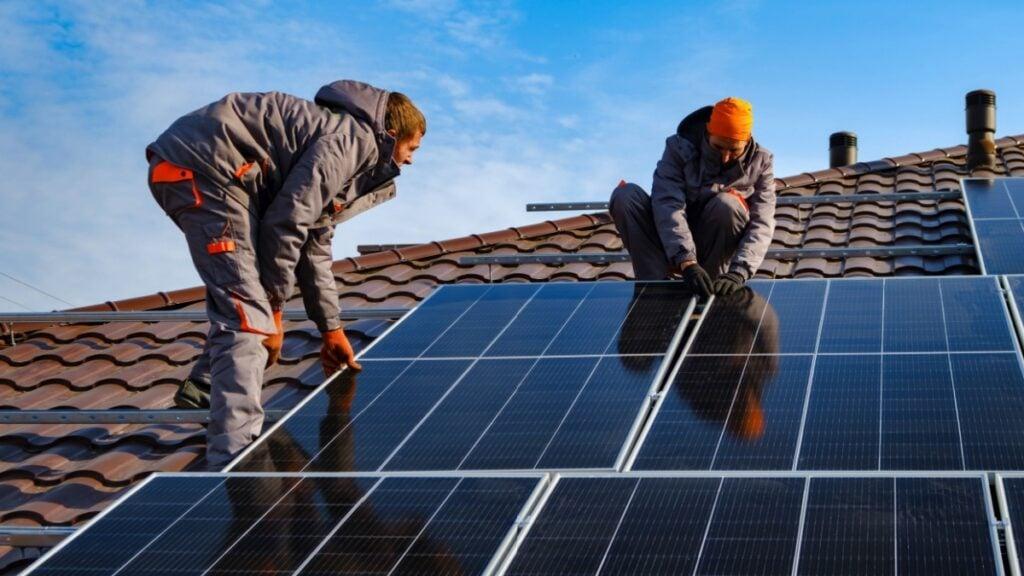Africa-Press – South-Africa. South African businesses and households have invested billions in alternative energy sources to reduce their reliance on Eskom’s unreliable supply and mitigate the impact of skyrocketing electricity tariffs.
The total capacity of privately funded renewable energy projects coming online in the private sector over the coming eight years has tripled from where it was just two years ago.
This pipeline is estimated to be worth R393 billion and has a potential generation capacity of 22 GW, which is approximately 50% of Eskom’s current total generation capacity.
Coupled with the rise in household rooftop solar, private energy is poised to capture an increasing share of the electricity generation market.
This is feedback from Nedbank’s Corporate and Investment Banking (CIB) division, which outlined the significant investment from private companies in electricity generation in South Africa in its latest Energy Prospects report.
Compiled in partnership with African Energy, the report focuses on what is needed to secure South Africa’s energy future.
This future looks vastly different from what it was just five years ago, with significant reform opening up South Africa’s electricity sector to large-scale private generation.
The wide-ranging changes were a result of the ongoing power supply crisis at Eskom, with constant breakdowns plaguing its coal-fired fleet, which is responsible for around 85% of South Africa’s electricity.
Nedbank explained that these changes have seen billions of private capital flow into alternative energy sources, particularly rooftop solar, and a permanent decline in demand for Eskom’s electricity.
It said that this permanent decline in demand from private users and poor economic growth has given the utility room to pause load-shedding for prolonged periods.
However, Eskom still provides the majority of South Africa’s electricity, and its supply remains unstable, resulting in excess demand being managed through load reductions, imports, and the use of open-cycle gas turbines (OCGTs).
The evidence of continued energy insecurity is evident in the ongoing reliance on compensatory load and the very high levels of unplanned outages.
Achieving a stable electricity supply requires sustained improvements in generation capacity, particularly in renewable energy, and a reduction in dependence on compensatory load.
As a result, the private sector needs to invest significantly more in generation capacity, given the rapidly growing pipeline, which is unlikely to be sufficient.
This pipeline can be seen in the graph below. Nedbank cautioned that this is not a perfectly accurate survey of the power that will come online, as many of these projects may never come online due to a lack of grid capacity and financing.
Transformation of South Africa’s electricity sector
This next phase of on-grid, privately funded renewable energy additions has the potential to change South Africa’s electricity supply beyond recognition.
If the necessary transmission infrastructure can be built in time, these projects will be able to generate a significant share of South Africa’s electricity and compete with Eskom.
According to the results of the National Transmission Company of South Africa (NTCSA)’s 2024 Renewable Energy Grid Survey (SAREGS), the total pipeline of potential renewable energy projects to 2032 amounted to about 172 GW.
The survey recorded that the 2024 pipeline was already nearly 9 GW, increasing to 34 GW in 2025 and 46 GW in 2027.
This will continue the rapid adoption of alternative energy sources by the private sector, with nearly 2,000 projects registered with Nersa since 2018.
These projects have a combined capacity of 10.5 GW and are valued at R202.7 billion, making them a vital source of not only energy but also investment and economic growth.
As a result, since 2022, the private sector’s generation capacity registered with Nersa has nearly tripled.
While businesses have largely driven this, households are not being left behind as they too are investing heavily in rooftop solar to reduce their reliance on Eskom and minimise the impact of skyrocketing electricity tariffs.
As of December 2024, Eskom estimated that 6.2 GW of behind-the-meter rooftop solar capacity had been installed, up from about 2.5 GW in July 2022.
This increase was buoyed by renewable energy and rooftop solar tax incentives and the energy bounce-back loan scheme for small-scale embedded generation, introduced in March and April 2023.
Rooftop solar PV installation, together with small-scale embedded generation, now accounts for about 4% of South Africa’s electricity generation. The subsidies, however, exclude large-scale renewables.
A further boost for solar PV installation has been a significant reduction in the cost of solar modules. Their cost has come down by about 50% during the past year, while the cost of batteries has fallen by about 40%.
The graphs below illustrate the rapid growth in generation facilities registered with Nersa from 2018 to 2024, as well as the strong rise in rooftop solar installations since 2022.
For More News And Analysis About South-Africa Follow Africa-Press






